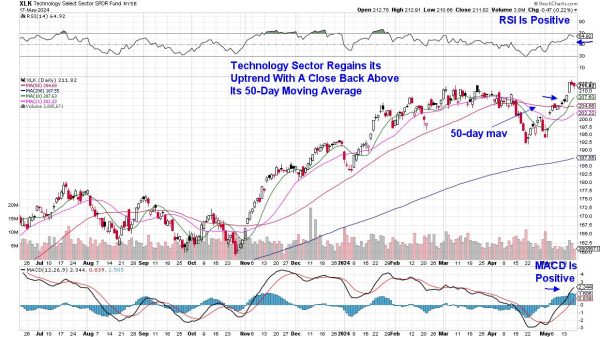President Barack Obama returned from the 2010 G20 Summit held in Toronto having failed to convince world leaders that more “economic stimulus” was needed to cure what ails the world’s economies. Walking a seeming tightrope between too much spending and spiraling deficits, on the one hand, and too little spending and economic recession, on the other, world leaders reluctantly agreed to err on the side of fiscal and monetary caution and to halve deficits in three years.
Economist Paul Krugman in response to this decision cautioned that this policy of deficit reduction is a mistake. In his opinion, the world suffers from too little spending, not too much spending. Without further stimulus, he opined, the world is headed for another depression.
Of course, the coronavirus put an end to whatever reluctance the world’s governments and its central banks had about fiscal and monetary “stimulus,” and caution was thrown to the wind. The latest addition to the debt stockpile will be the $1.7 trillion proposed US omnibus government funding bill. We are now all awash in debt and fiat money. With the US inflation rate running north of 8 percent a year and recession (or worse) still hanging over the US economy, we may yet get a recurrence of ’70s style stagflation!
Is this call for more “economic stimulus” sound or just more Keynesian nonsense from statists and their court jesters? Most calls for economic stimulus are based on the so-called multiplier effect.
John Maynard Keynes believed that spending (consumption) was the engine of economic activity. A dollar spent, he opined, would ripple through the economy creating new wealth worth many times the value of the original dollar. He called this the “multiplier effect.”
It is supposed to work something like this:
Joe is given $100. Joe is in the habit of spending 90 percent of his income, saving the rest for a rainy day. Joe buys a new coat for $90. The shop owner Max, from whom he bought the coat, now has Joe’s $90, but he too is in the habit of spending 90 percent of his income, saving the rest. Max spends $81 (90 percent of $90) taking his wife out to dinner. The restaurant owner Mario now has $81 to spend. Like Joe and Max, Mario spends his income, buying various items for $72.90 (90 percent of $81) for his restaurant at the local hardware store.
This chain of buying and selling continues until someone spends the last dime. According to Keynes’s multiplier, Joe’s $100 increased the wealth of society by $1,000 (ten times $100). Put another way, the value of all goods and services in society increased by $1,000 because of the chain of buying and selling started by Joe.
What would happen if the savings rate jumped to 20 percent?
The multiplier would be only half as much, and each new dollar of income would create five dollars in newfound “wealth.” Joe’s $100 would increase the value of goods and services bought and sold in society by only $500. The multiplier effect is the reciprocal of the demand for money, or rate of savings. In this case, 1 divided by 0.20, or 5.
In the Keynesian view, therefore, the act of saving must be discouraged if the general goal is to increase production and reduce unemployment. As a result, frugality is labeled “hoarding.” Not a good thing. On the other hand, government profligacy is good—at least when the government needs to stimulate the economy.
With the magic of the multiplier effect dancing in his head, Keynes came to the rather novel conclusion that all that is necessary to cure economic depressions and unemployment is for the government to print and spend money. Keynes wrote (with obvious contempt for market-based economic theories) as follows:
If the Treasury were to fill old bottles with banknotes [fiat paper money], bury them at suitable depths in disused coal mines which are then filled up to the surface with town rubbish, and leave it to private enterprise on well-tried principles of laissez-faire to dig the notes up again . . . there need be no more unemployment and with the help of the repercussions, the real income of the community, and its capital wealth also, would probably become a good deal greater than it actually is.
And what can we reasonably conclude from this statement? We can conclude that the most influential economist of the twentieth century does not know beans about the value of money!
Why bother hiding banknotes in old bottles? Do away with the charade and give everyone a printing press so we can print our own banknotes. Everyone will be busy counterfeiting money until all hours of the morning. We will have solved the problem of unemployment, idleness, and scarcity in one fell swoop and become millionaires in the process. How’s that for economic stimulus?
Of course, this is but a fairy tale. You cannot print your way to wealth and economic prosperity. Wealth does not lie in the amount of paper money floating around the economy, but rather in the available supply of goods and services. An increase in wealth is made possible by technological innovations, which result in more efficient uses of scarce resources. Society is more prosperous when more and better goods and services are available at prices people can afford to pay. By Keynes’s standard, Greece should be rich, while Switzerland should be well on its way to the poorhouse!
As Jean-Baptiste Say pointed out, “commodities are ultimately paid for not by money, but by other commodities. Money is merely the commonly used medium of exchange; it plays only an intermediary role. What the seller wants ultimately to receive in exchange for the commodities sold is other commodities.”
Trying to “stimulate” the economy by flooding the market with new money makes matters worse. Any increase in the money supply is inflationary, even when prices are stable. Stable price levels often mask underlying inflation in cases where prices would have declined absent an increase in the money supply. In fact, for most of the nineteenth century, at a time of great industrial and agricultural expansion, prices did decline. Price declines were then considered normal—the result of greater efficiencies in production—and a benefit of the Industrial Revolution.
In the current context, general price declines would clear the market of excess goods and services (e.g., unsold houses) and lay the foundation for true economic recovery. Increasing the money supply—even when it results in no discernible general price increases—prolongs the beginning of economic recovery, sets the stage for the next boom-bust cycle, erodes the value of money, and robs us of the benefits of improvements in technology, production, and distribution.
The creation of new money out of thin air will not increase society’s real wealth. The effect of more fiat money has more to do with illusion than reality. People will have more money to spend, but they will soon discover that their money buys less. And when the multiplier runs its course, society will find that the placing of new banknotes in old bottles was just another government con game.























